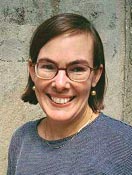

Alumni Gazette
What Are the Health Effects of September 11?
 |
| Thomas |
If you were in Manhattan on or shortly after September 11, 2001, Polly Thomas ’80M (Res) wants to hear from you.
Thomas, assistant commissioner for the Bureau of Surveillance with the New York City Department of Health and Mental Hygiene, is looking for tens of thousands of people to take part in the World Trade Center Health Registry, an effort to track the health information of people who were near the site of the terrorist attacks nearly three years ago.
A joint effort by the New York City Department of Health and Mental Hygiene, the Agency for Toxic Substances and Disease Registry, and the Federal Emergency Management System, the registry is collecting health information on residents, employees, and students, as well as emergency workers and volunteers, who were in lower Manhattan during and after the attacks on the World Trade Center. The baseline enrollment stage, begun last September, continues through August.
“Some would rather not talk about [the terrorist attacks], but since we are starting two years after the event, they’re better able to,” Thomas says. “The standard health questions don’t bring up unpleasant memories, but those who do seem to have mental problems related to September 11 are immediately referred to LifeNet, a mental health service, by the interviewer.”
When the enrollment stage ends, researchers will assess the data and sort participants by level of exposure, taking into account the number of days people were at the site and their proximity to ground zero. The goal is to follow people’s health over at least 20 years.
Thomas says that as participants are tracked, the information will be matched with data from cancer registries, hospital records, and death records.
“We want to do substudies to clarify some of the data, such as a study of sinus problems as a follow-up to the respiratory data,” Thomas says. “After September 11, there was a smell of burning plastic. So what happens when you breathe those fumes? We’ve got lots of questions.”
She also hopes to conduct other surveys to gather more data—“For instance, to interview people who had apartments in the neighborhood but didn’t stay there, yet went back to clean their homes.”
About 25,000 people enrolled within six months, but Thomas says researchers need more. “The more people we get, the more accurate our information will be.”
Finding most of the people affected is relatively easy—they’re residents of New York City, New Jersey, and Connecticut—Thomas says, but the organization is urging people across the northeast and throughout the world who were in lower Manhattan on September 11 to contact the registry by calling (866) NYC-WTCR (692-9827) or by visiting the registry’s Web site.
“We realize that not everyone will sign up, but the data we do gather will benefit everyone who was in the area on September 11,” Thomas says.
